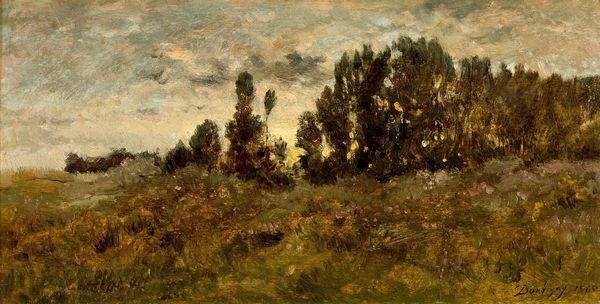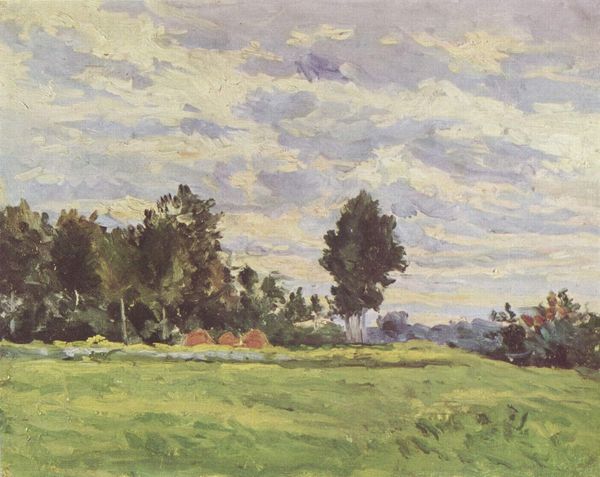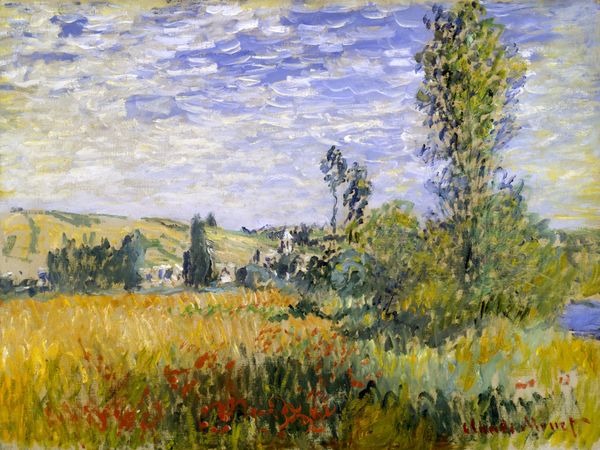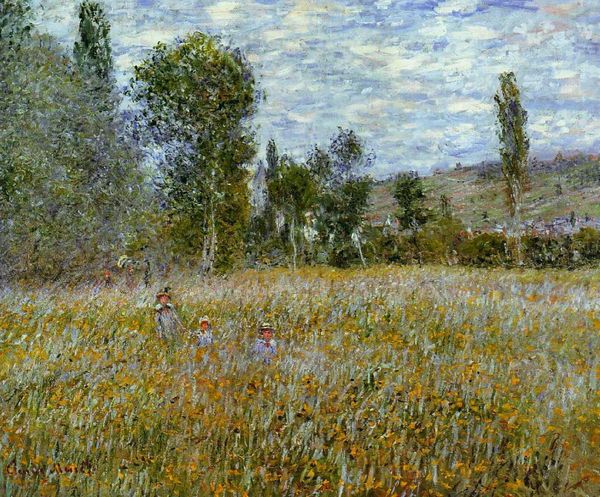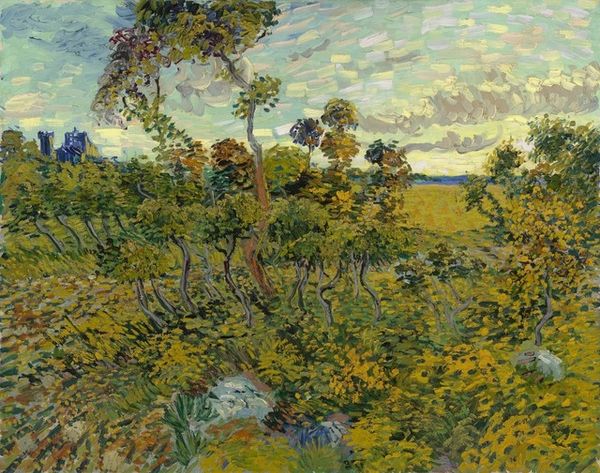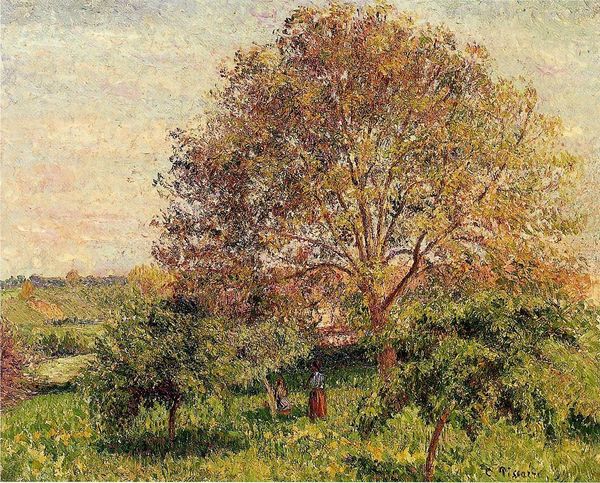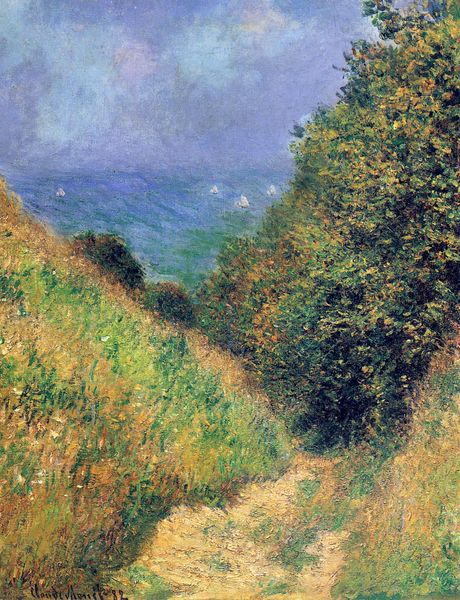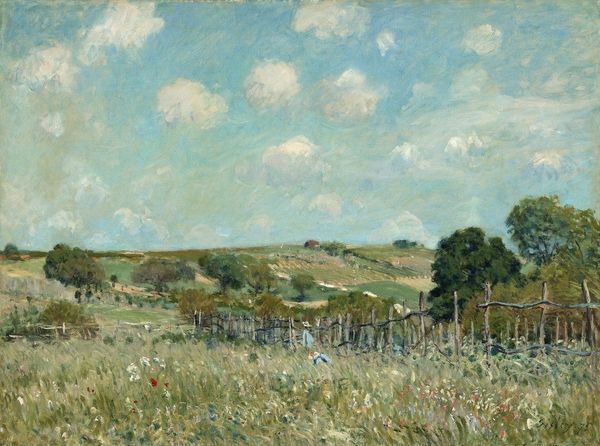
painting, plein-air, oil-paint
#
tree
#
sky
#
painting
#
impressionism
#
plein-air
#
oil-paint
#
landscape
#
impressionist landscape
#
oil painting
#
natural-landscape
#
nature
#
modernism
Copyright: Public domain
Editor: So, this is "Young Corn," an oil painting by Charles-François Daubigny. It’s quite calming, almost like a snapshot of a breezy summer day in the countryside. I am curious, how do you interpret this work, looking beyond its initial impression? Curator: The "calming" nature you observe isn't simply aesthetic; it reflects Daubigny’s radical approach to landscape painting. He wasn’t just painting pretty scenes. He was engaging with broader social shifts around agrarian life. In his choice to paint "en plein air" -- in the open air -- what statement do you think he's making about academic art, the salon, and access to art education at the time? Editor: I hadn't considered the statement behind plein air. Was it pushing against the establishment to paint outdoors rather than the conventions taught in stuffy classrooms? Curator: Precisely! Daubigny rejected the idealized, historical landscapes favored by the academy. "Young Corn" embraces a natural, immediate, and unadulterated representation of the land. We should also consider who benefits from the harvest here and who may not. Daubigny’s work coincides with growing unrest about land ownership and labor conditions in rural France. Can we really divorce these paintings of the French countryside from this context? Editor: That's fascinating! I'm starting to see how this isn't just a peaceful landscape; it's entangled with the social and economic issues of the era. The light, open style seems almost to emphasize the availability, maybe even exploitability, of nature. Curator: Exactly! And Daubigny exhibited independently alongside Courbet, so by choosing everyday landscapes instead of historical or allegorical scenes he challenged the established artistic and political order. Editor: I see. The seemingly innocent painting then becomes a statement on land, labor, and artistic freedom. Curator: It also becomes an exercise in disrupting dominant narratives about nationhood and labor. Hopefully, through today’s chat, we were able to gain a critical view, that goes beyond the painting’s picturesque appeal!
Comments
No comments
Be the first to comment and join the conversation on the ultimate creative platform.

